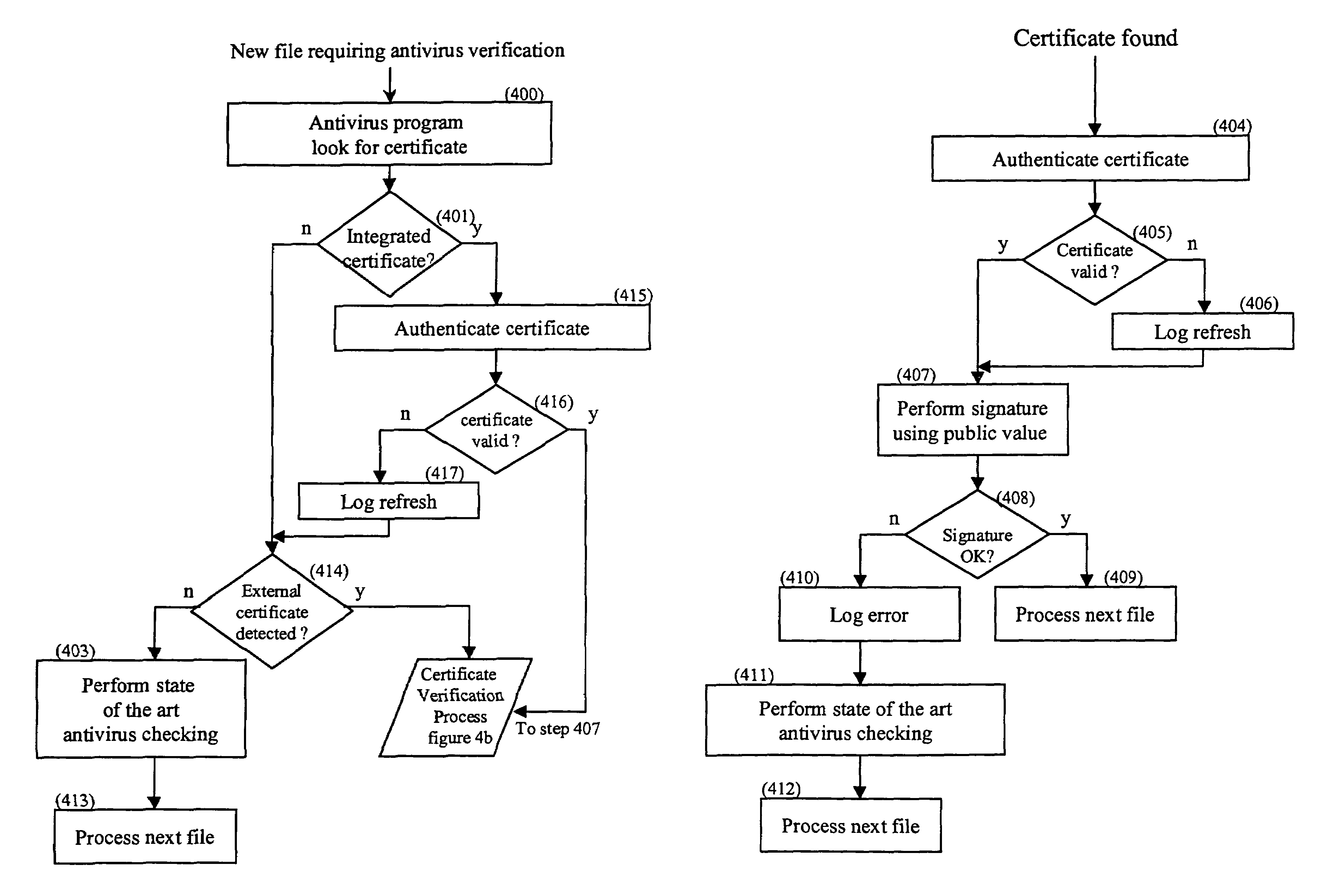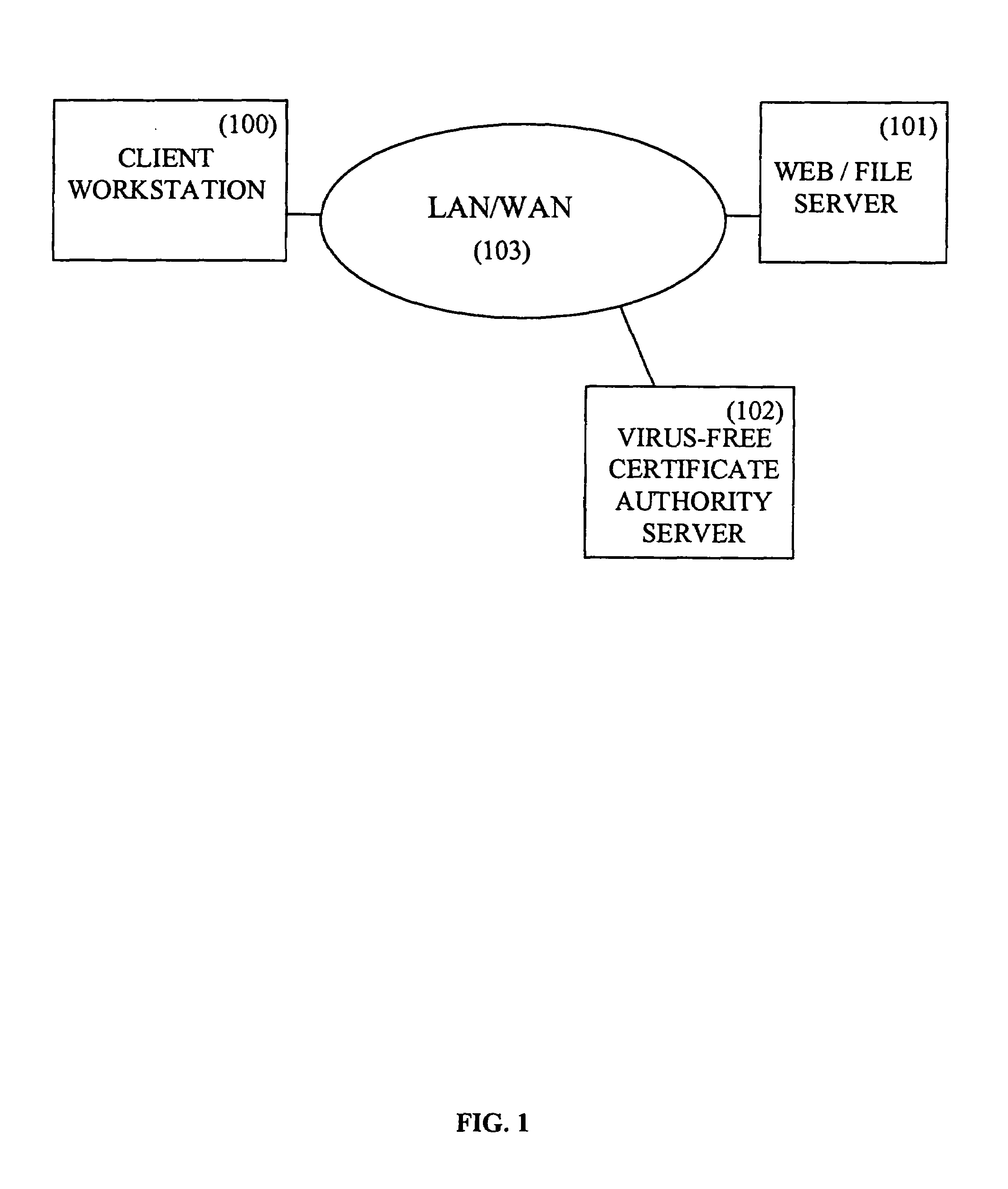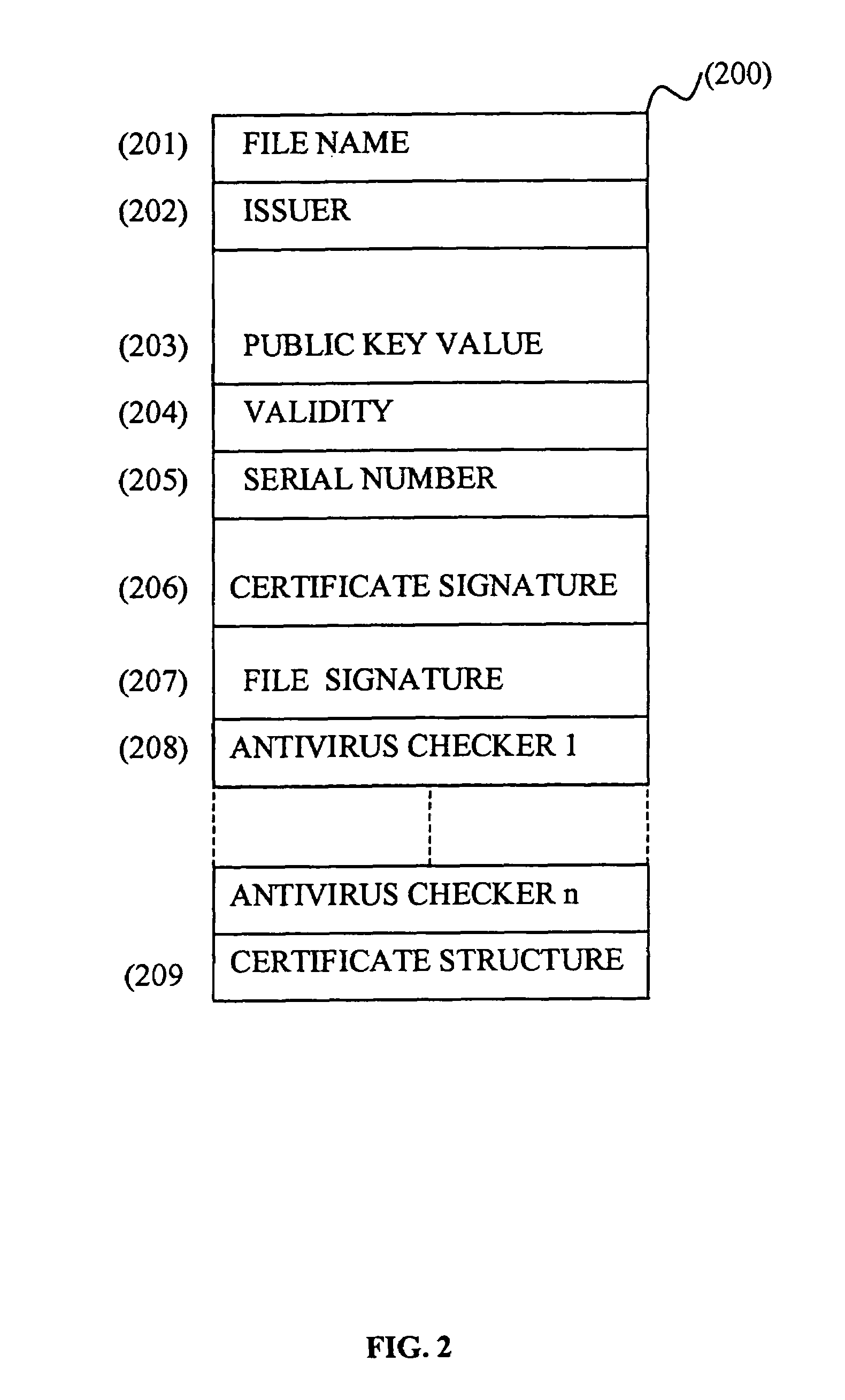Method and system for generating and using a virus free file certificate integrated within a file
a file certificate and file technology, applied in the field of computer viruses, to achieve the effect of simplifying the anti-virus processing of said files, speeding up and improving the current anti-virus methods, and improving the anti-virus processing speed
- Summary
- Abstract
- Description
- Claims
- Application Information
AI Technical Summary
Benefits of technology
Problems solved by technology
Method used
Image
Examples
Embodiment Construction
Introduction
[0101]FIG. 1 describes the different entities involved in the anti-virus system disclosed in the present invention. In most of the cases, the file that the Client Workstation (100) requires, is stored in a Web / File Server (101). A Certificate, stored in a directory within the Web / File Server (101), is associated with this file. The Certificate is provided by a Virus-Free Certificate Authority Server (102) after request. Said request is sent by the Web / File Server (101) to the Virus-Free Certificate Authority Server (102) through a LAN / WAN (Local Area Network / Wide Area Network) (103) which can include the Internet network. The Client Workstation (100) then downloads both file and associated Certificate in a directory and asks its anti-virus program to check the file. This checking process does not use any standard anti-virus program but is based on the previously downloaded Certificate. The only verification required for determining whether the file is virus-free or not, ...
PUM
 Login to View More
Login to View More Abstract
Description
Claims
Application Information
 Login to View More
Login to View More - R&D
- Intellectual Property
- Life Sciences
- Materials
- Tech Scout
- Unparalleled Data Quality
- Higher Quality Content
- 60% Fewer Hallucinations
Browse by: Latest US Patents, China's latest patents, Technical Efficacy Thesaurus, Application Domain, Technology Topic, Popular Technical Reports.
© 2025 PatSnap. All rights reserved.Legal|Privacy policy|Modern Slavery Act Transparency Statement|Sitemap|About US| Contact US: help@patsnap.com



